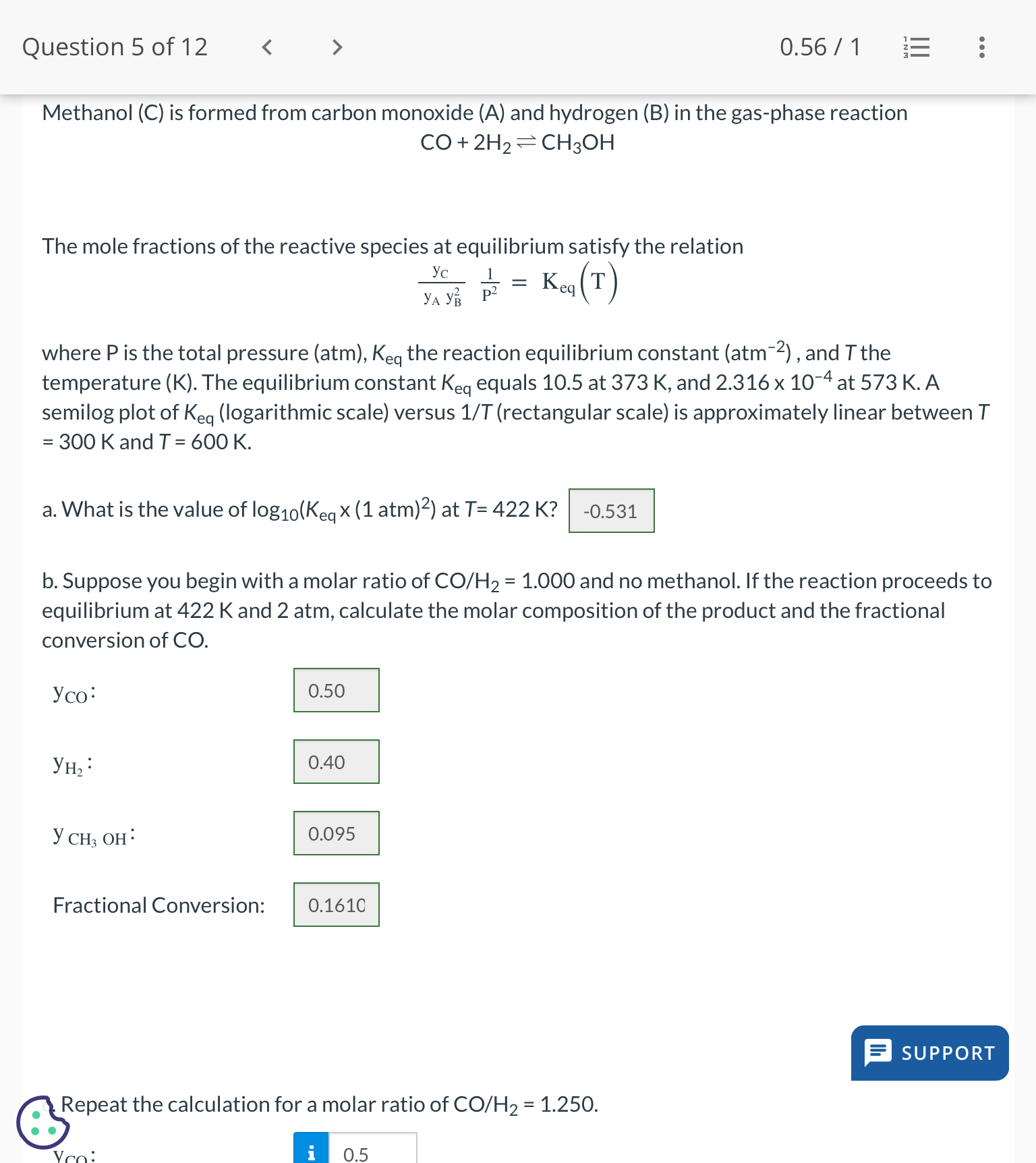Answered step by step
Verified Expert Solution
Question
1 Approved Answer
I need part B . Its the same question the ratio now it 1 . 2 5 0 0 . 5 6 1 Methanol )
I need part B Its the same question the ratio now it
Methanol is formed from carbon monoxide and hydrogen B in the gasphase reaction
The mole fractions of the reactive species at equilibrium satisfy the relation
where is the total pressure atm the reaction equilibrium constant and the temperature K The equilibrium constant equals at K and at A semilog plot of logarithmic scale versus rectangular scale is approximately linear between and
a What is the value of at
b Suppose you begin with a molar ratio of and no methanol. If the reaction proceeds to equilibrium at K and atm calculate the molar composition of the product and the fractional conversion of CO
:
:
:
Fractional Conversion:
Repeat the calculation for a molar ratio of

Step by Step Solution
There are 3 Steps involved in it
Step: 1

Get Instant Access to Expert-Tailored Solutions
See step-by-step solutions with expert insights and AI powered tools for academic success
Step: 2

Step: 3

Ace Your Homework with AI
Get the answers you need in no time with our AI-driven, step-by-step assistance
Get Started


